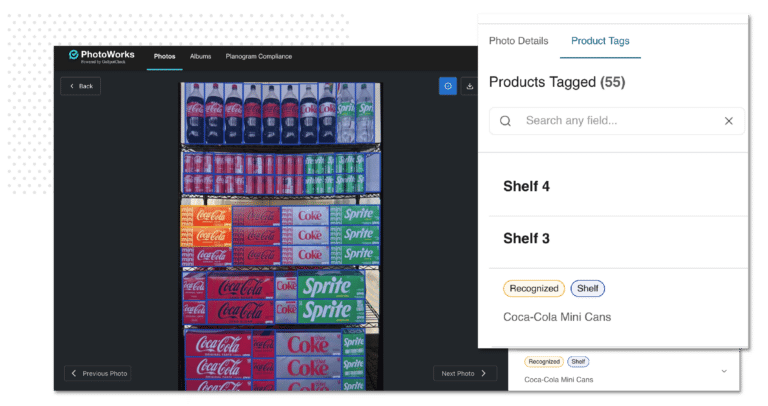Coronavirus (COVID-19) has proven to be the ultimate disruption in many industries. From retail to manufacturing, no business has escaped the unexpected challenges brought on by the outbreak. The economic toll of social distancing has been astronomical—millions have been laid off, businesses have closed their doors permanently, and the demand for essential goods has risen dramatically. So, when will things get back to normal, and how can you best be ready?
While many U.S. states are already relaxing their restrictions, it’s still unclear what a gradual return to normalcy will look like, especially for businesses. During the transition from social distancing to the “new normal” (whatever that may be), businesses will need to be at their most prepared. Here are a few steps you can take to get ready for the end of social distancing:
Short-term steps
Be ready to implement and document new processes. New rules governing businesses will undoubtedly arise in the aftermath, and you’ll need a flexible mindset to keep up. Your old processes simply won’t work in the “new normal.” Whatever the new rules may be, they will be written in sand and delivered with minimal notice. Given this reality, here are some key areas of focus to help you be prepared:
- Maintain a laser focus on health and safety. This means rolling out new policies for employees and customers alike. Perform regular checks to ensure you meet the new standards and keep your company aligned with best practices from health agencies.
- Be ready for limited capacity. Businesses will need to abide by social distancing requirements even as they incrementally shrink back. You will be operating with fewer people, a smaller customer base, and new layouts to your space. To keep everything and everyone on track, create guidelines and checks for key operations.
- Focus on attaining hyper-efficiency. Fewer workers and customers mean you need to be prepared to do more with less. Digitization and automation are key here. Develop a digitization mentality and find ways to streamline daily, manual processes.
- Customer care is your new mantra. With limited clientele, you need to put customer satisfaction first. Now is the time to add rigor to your customer service and quality practices. This is not only a win for customer retention but also for maintaining a high level of operational efficiency.
- Create an adaptable training regimen. Workers returning to non-essential jobs need to know how to do their job while abiding by the new rules, and those rules will likely change. So, be prepared to pivot with the latest updates and have tools in place to educate your staff accordingly.
Longer-term steps
The current crisis precludes long-term planning, but don’t let that stop you from using the latest data to guide your decisions. For both business- and customer-facing enterprises, data from the frontlines is like a canary in a coal mine, providing early warnings for trending problems and imminent issues. Here are a few steps you can apply after the major hurdles of re-opening are behind you:
- Recognize what you can and can’t control. You can’t control public perception, but you can mitigate a negative news cycle with high-quality data about customer behavior and internal policy enforcement. Restaurants in particular will be under scrutiny for a while, and it’s critical for them to be above reproach. Focus more on what you can control and less on the external factors.
- Get flexible and stay agile. Create a network of inspections, audits, and daily checks that constantly keep you in the loop. Use digital tools like daily dashboards to get a visual cross-section of your collected data and make smarter, faster decisions. Quick revision is the name of the game—don’t be afraid to make plans, but don’t expect to keep them indefinitely.
- Develop a readiness framework. COVID-19 took many by surprise, but a virus outbreak is not the only catastrophe you need to look out for. Natural disasters, economic upheaval, and supply chain woes can all happen with little warning. Don’t make the mistake of putting all your eggs in one basket (i.e., using only one supplier) and maintain an up-to-date plan for every downturn relevant to your business.
- Always be evaluating. Strong, current data will let you pivot on a dime. Continuously gather the best data you can on a daily basis, investigate it using an easy-to-digest visualization, and make an informed decision. To leverage high-quality info, you need to collect it using the most precise and reliable methods available, such as digital forms.
- Course-correct, then observe. You’ll have to make many tactical decisions in the fallout of COVID-19, and it will often be difficult to perceive any immediate changes. Take the time to aggregate your data and see where your initiatives are leading. With the proper tools, you’ll know whether you made the right decision before potential problems get out of hand.
How Form.com can help
The best way to keep operations running smoothly is by integrating and automating them with a mobile solution. Form.com specializes in helping large organizations mobilize flexible forms that match their existing process perfectly. Learn more about how we can jumpstart your digital transformation by getting in touch with a solutions expert. Or, upload your current forms, and we’ll configure a mobile app based on them at no cost.




